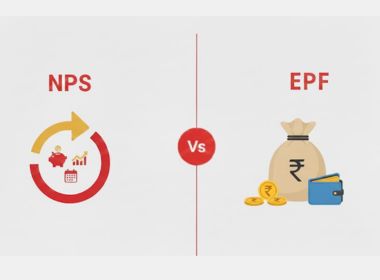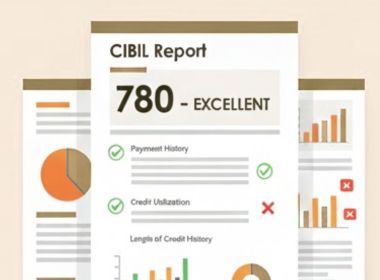Search Suggestions
- Gold Loan
- Money Transfer
- Mutual Funds

Portfolio Rebalancing: What is it and How Does it Work?
In present times, making investments is not enough to achieve desired financial growth. There is a lot more that goes into the process of wealth generation. It is important to ensure that your investment portfolio is not only well-aligned with your current needs but also in sync with market trends. It is a well-known fact that the financial market doesn’t remain the same at all times and experiences significant fluctuations. In such instances, the investment strategy you decided upon initially might not work, and you won’t get the ROI you were expecting. This is when the concept of portfolio rebalancing comes into the picture.
Table of Content
- What is Portfolio Rebalancing?
- Why is it needed?
- How does it work?
- How often should you rebalance your portfolio?
What is Portfolio Rebalancing?
Portfolio rebalancing, as the name suggests, is the process of reviewing and readjusting your investments according to market trends. This financial exercise involves buying and selling portions of your portfolio so that it is appropriate for your risk tolerance and financial goals.
In simple terms, portfolio rebalancing is a process that streamlines your investments in such a way that you get decent returns, regardless of market conditions. Additionally, it also ensures that your portfolio’s asset allocation is according to your current risk appetite.
Why is it needed?
Over time, each asset class performs in a different manner. For example, stocks may hit a record high in a particular phase, while bonds may not experience a similar kind of growth. It is also possible that after a few months, mutual funds start outperforming other investment avenues. To ensure that your portfolio grows, despite all these market fluctuations, it is important to review your investments and make any necessary adjustments. When left unattended for a longer period, your portfolio will not contribute much to your financial growth.
With the help of portfolio rebalancing, you can ensure that your investments are in complete sync with your financial needs as well as the current market situation. This keeps the asset allocation in line with the investment plan. Additionally, it is also useful in reducing overall risk exposure.
Suggested Blog: 6 Key Investment Concepts Beginners Should Know
How does it work?
Rebalancing acts as a counterbalance to the ongoing movement in the financial market. This can bring your portfolio back on track even when the market is at maximum volatility. This involves re-strategising the asset allocation according to current trends.
For example, if stocks are experiencing a significant dip, you can take the money out and use it for a different asset class that is displaying good growth potential. Or when some other investment avenues aren’t performing too well, you can move your money to some other place. Making such changes can actually change the overall risk profile of your investment portfolio.
At the same time, it is important to avoid taking any impulsive decisions based on a wrong judgment of the market scenario. This can do more harm than good and lead to significant losses.
How often should you rebalance your portfolio?
While this is one of the most commonly asked questions about portfolio rebalancing, there is no universal answer to this. There are mainly two approaches that people follow:
- Calendar-based Rebalancing: In this approach, your investment portfolio is rebalanced on a predetermined schedule, such as once or twice in a year.
- Trigger-based Rebalancing: In this method of rebalancing, asset allocation in your investment portfolio is adjusted when its weightings exceed a specific threshold. While this threshold can vary, most people keep it +/- 10% from the strategic target.
A few people also choose a combination of these two approaches. This involves determining your risk tolerance on a regular basis and reviewing your investment when a threshold is exceeded.
Final Words
Effective risk management of your investments is essential to get good profit margins, and this is exactly what portfolio rebalancing helps you achieve. This financial exercise involves reviewing your investment portfolio from time to time and making any necessary changes. At Muthoot Finance, we offer a wide range of investment options, such as mutual fund schemes, SIP, etc. You can explore all the options and make a choice as per your specific requirements. We have a dedicated team of finance experts who can help you make the right selection. For more information, you can either reach out to us online or visit the nearest Muthoot Finance branch.
- Invest in Mutual Fund
- Systematic Investment Plan
- Mutual Fund Calculator
- Liquid Mutual Fund
- Debt Funds
- Balanced Funds
- Equity Linked Schemes
- Tax Saving Schemes
CATEGORIES
OUR SERVICES
-

Gold Loan
-

Personal Loan
-

Cibil Score
-

Vehicle Loan
-

Small Business Loan
-

Money Transfer
-

Insurance
-

Mutual Funds
-

SME Loan
-

Corporate Loan
-

NCD
-

PAN Card
-

NPS
-

Custom Offers
-

Digital & Cashless
-

Milligram Rewards
-

Bank Mapping
-

Housing Finance
-

#Big Business Loan
-

#Gold Loan Mela
-

#Kholiye Khushiyon Ki Tijori
-

#Gold Loan At Home
-

#Sunherisoch
RECENT POSTS

Gilt Fund vs Liquid Fund: Full Form, Meaning & SIP Guide
Know More
XIRR in Mutual Funds & SIP: Full Form, Meaning, Formula and How to Calculate
Know More
7 Key Factors to Consider Before Taking an SME Loan
Know More
Difference Between Black Gold and Gold: Everything You Need to Know
Know More
NPS vs EPF: Everything You Need to Know About Retirement Savings
Know More
What is a Credit History? Impact on Credit Score and Credit Report
Know More
Loan Closure Vs. Loan Settlement: Meaning, Benefits, and CIBIL Score Impact
Know More
Is Silver the New Gold? A Look at 2025 Price Trends
Know More
What Are the Various Types of Equity Funds and How They Work?
Know More
Why Are Gold Loans Becoming the Most Preferred Financial Option in 2025?
Know MoreFIN SHORTS

What Are Co-Pay and Deductibles in Insurance Policies?
Know More
Should You Take a Loan Against Your Mutual Fund or SIP?
Know More
Top 5 Best Mid-Cap Mutual Funds to Watch in 2026
Know More
Are Personal Loans Right for Retirees? Key Points to Consider
Know More
What Happens to a Personal Loan After the Borrower Dies?
Know More
Best Loan Choices for Credit Scores of 580 and Below
Know More
7 Reasons Why a Gold Loan Is the Best Option for Small Businesses
Know More
10 Reasons Why People in India Prefer Physical Gold
Know More
Real Estate vs Gold: Which Is a Better Investment in India?
Know More
10 Common Mistakes That Make Investors Lose Money in Mutual Funds
Know More
10 Reasons Why Gold Has So Much Appeal in Uncertain Times
Know More
7 Ways Settling Debt Can Impact Your CIBIL Score
Know More- South +91 99469 01212
- North 1800 313 1212


